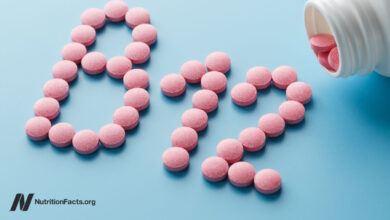I Tried the 4 So-Called Best Pancake Recipe Ideas

During my tests, I looked for the flapjacks with the best flavor (not too sweet, but not bland), the fluffiest texture, and a good amount of integrity so they could hold their shape and make an enticing stack. I also considered the ease of the recipe and how many dishes it required. (Less clean-up is always a plus in my book.)
The four popular pancake recipes I tested were as follows:
All have a number of positive reviews online and come from well-trusted sources. Here’s what happened when I fried, flipped, flapped, and jacked enough to feed an army of hungover brunch guests.
I tried cooking the four contenders for the best pancake recipe on the internet
The main differences between these basic pancake recipes are the use of sweeteners and fat, the kind of dairy used, and the amount and kinds of leaveners. One recipe also called for separating the eggs.
And now, for the results….
Mark Bittman’s pancake recipe
Bittman’s recipe was the simplest. Both the sugar and the butter are optional, so you could make this a five-ingredient breakfast. This minimalist approach won the recipe some points, but unfortunately, leaving out the sugar and butter left much to be desired in the flavor department. The pancakes had a nice texture and thickness, but they didn’t brown as well on the griddle, probably due to the missing caramelization from the sugar and butterfat.
Martha Stewart’s pancake recipe
Next up, Stewart’s recipe had a similar ingredient list but called for the inclusion of both sugar and melted butter. The result was a much more flavorful pancake with a rich, decadent flavor. It also browned well and rose quickly on the hot griddle. This is a solid recipe for everyday pancakes.
Bon Appetit’s pancake recipe
The Bon Appetit recipe took the recipe complexity up a notch. It also calls for three times as much butter (six tablespoons) for twice as much flour as Martha’s recipe. There’s also an extra step (and dishes) of separating the eggs, mixing the dairy into the yolks, separately whisking the whites, then combining the whites and yolks with the dry ingredients. The batter also needs to rest for 10 minutes, during which the copious amount of baking powder (a whopping four tablespoons) reacts with the liquids.
These pancakes look as close as any to a stack of diner-style flapjacks. They’re hearty and super thick, with lots of sweetness and richness. The pancakes rise well and develop a dry, golden-brown crust on the griddle, with a tender, cake-like center perfect for sopping up a generous drizzle of maple syrup. Unfortunately, all of that baking powder gave the pancakes an unpleasant metallic aftertaste that was hard to drown out, even with a river of maple syrup.
King Arthur’s buttermilk pancakes
Finally, we tested King Arthur’s buttermilk pancakes to see how the use of a different kind of dairy affected the final product. Because buttermilk is acidic, the recipe can call for both baking powder and baking soda for leavening (baking soda requires acid to react, whereas baking powder reacts with liquid and heat). This recipe also called for a 15-minute resting period, during which the batter became bubbly and airy.
The King Arthur pancakes struck the right balance of tanginess and sweetness, with a thick, cake-like texture that wasn’t too dense or too sky-high. The pancakes turned golden brown and held their shape well, and there was no trace of bitterness from the leaveners.
I also appreciated that there was no need to separate eggs. In fact, though Rutledge calls for mixing the dry and wet ingredients separately, I had success combining the dry ingredients in a large bowl, making a well in the center to whisk together the eggs, milk, and melted butter, then gently combining everything.
Tips for cooking the best pancake recipe
Whichever recipe you choose, there are a few universal best practices for pancake-making. First, it’s key not to overmix the wet and dry ingredient. While you don’t want streaks of egg whites, a few clumps of flour are totally fine. Overmixed batter will result in dense, flat flapjacks.
It’s key not to overmix the wet and dry ingredients. While you don’t want streaks of egg whites, a few clumps of flour are totally fine. Overmixed batter will result in dense, flat flapjacks.
Secondly, it’s key to thoroughly preheat your griddle or frying pan before you grease it and add the batter. It shouldn’t be smoking hot (medium heat, or about 350°F on an electric griddle is ideal), but your pancakes won’t rise or brown as nicely if you add the batter to a cold surface.
Speaking of browning, the best fat for cooking pancakes is butter. In a pinch, you can use a neutral oil, but melted butter will give you the beautiful toasty brown color and nutty, creamy flavor you’re looking for.
If you’re making pancakes for a crowd, avoid piling the finished flapjacks on a plate while you finish up the batter. They’ll cool down and the steam they release will make your stack soggy. Instead, keep your oven at 200°F while you cook and add the finished cakes to a wire rack set over a baking sheet in a single layer. Keep them warm in the oven, and when you’re done at the griddle, pile your plates high with pancakes so you can all enjoy the meal together.
And whatever you do, don’t forget the pure maple syrup.

